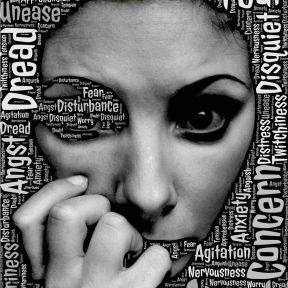
Psychoanalysis
It began, of course, with Freud. Psychoanalysis refers both to a theory of how the mind works and a treatment modality. In recent years, both have yielded to more research-driven approaches, but psychoanalysis is still a thriving field and deals with subjective experience in ways that other therapies sometimes do not.
Belief in such hallmarks of Freudian thinking as the primacy of the unconscious fantasy, sexual desires (libido, penis envy, Oedipal complex), and dreams has wavered. But Freud also identified such basic mental maneuvers as transference, projection, and defensiveness, and demonstrated how they distort functioning. As a treatment based on extended self-exploration, psychoanalysis has evolved beyond the silent-shrink stereotype.
For more, see Psychoanalytic Therapy.
Contents

Freud pioneered the idea that unconscious forces influence overt behavior and personality. He believed that childhood events and unconscious conflict, often pertaining to sexual urges and aggression, shape a person’s experience in adulthood.
Freud’s theory of psychoanalysis created the framework for psychoanalytic therapy, a deep, individualized form of talk therapy. Psychoanalytic therapy encompasses an open conversation that aims to uncover ideas and memories long buried in the unconscious mind.
Psychoanalysts employ specific techniques, such as spontaneous word association, dream analysis, and transference analysis. Identifying patterns in the client’s speech and reactions can help the individual better understand their thoughts, behaviors, and relationships as a prelude to changing what is dysfunctional.
The id holds primitive desires and urges. Freud conceived of it as an unconscious, instinctual, dark component of the psyche that seeks pleasure. It isn’t rational or accessible, and primarily possesses sexual and aggressive urges—although some contemporary psychologists believe that Freud overemphasized these tendencies.
The superego embodies a person’s higher moral code. This moral compass is responsible for self-control, decision-making, and sacrifice, abilities that allow an individual to live well with others in society. The superego is thought to arise from parental authority, according to Freud’s view. It has absolute and inflexible standards, which leads to conflicts with the impulsive id.
The ego represents the self that balances and resolves conflicts between two competing forces: the primitive impulses of the id and the morals and values of the superego. This ego then represents one’s reality, identity, and decision-making consciousness; in Latin, the word “ego” means “I.”
The unconscious is the vast sum of operations of the mind that take place below the level of conscious awareness. The conscious mind contains all the thoughts, feelings, cognitions, and memories we acknowledge, while the unconscious consists of deeper mental processes not readily available to the conscious mind.
Transference is a phenomenon in which a patient unconsciously directs feelings or desires toward an important figure in his life, such as a parent, onto the therapist. For example, the patient may respond angrily when the therapist unconsciously reminds the patient of his domineering father.
Countertransference encompasses the feelings that the patient evokes in the therapist. Therapists can sometimes observe their countertransference and leverage it into insight that can help the patient. For example, a therapist who feels irritated by a patient for no clear reason may eventually uncover subtle unconscious provocations that annoy and repel others, thereby keeping the patient unwittingly isolated. Those behaviors can then be addressed in therapy.
Defense mechanisms are unconscious strategies that people use to protect themselves from discomfort. For example, they may attribute their own feelings onto someone else (projection), or separate components of their life to prevent conflicting emotions (compartmentalization). Defense mechanisms are one of the Freudian ideas that have endured as the field has progressed.
Projection is a defense mechanism by which a person displaces their own feelings onto a different person or object. The term is often used to describe defensive projection—attributing one’s unacceptable urges to another. For example, if someone continuously bullies and ridicules a peer about his insecurities, the bully might be projecting his own struggle with self-esteem onto the other person.
Freud believed that dreams were vehicles for people to act out their unconscious wishes and desires, and that interpreting symbols in dreams could elicit awareness and insight. Today, some scientists disagree with Freud’s conclusions or entirely contest the idea that dreams possess deeper meaning. Yet dreams can still be helpful in a therapeutic context if they initiate discussion and insight.
Although there is diversity in psychoanalytic theory and treatment today, several beliefs cut across these different perspectives:
1. An assumption that all human beings are motivated in part by wishes, fantasies or tacit knowledge that are outside of awareness (this is referred to as unconscious motivation).
2. An interest in facilitating awareness of unconscious motivations, thereby increasing choice.
3. An emphasis on exploring the ways in which we avoid painful or threatening feelings, fantasies and thoughts.
4. An assumption that we are ambivalent about changing and an emphasis on the importance of exploring this ambivalence.
5. An emphasis on using the therapeutic relationship as an arena for exploring clients’ self-defeating psychological processes and actions (both conscious and unconscious).
6. An emphasis on using the therapeutic relationship as an important vehicle of change.
7. An emphasis on helping clients to understand the way in which their own construction of their past and present plays a role in perpetuating their self-defeating patterns.
Neuropsychoanalysis is a subfield that aims to wed the insights of Freudian psychology and its emphasis on subjective experience with neuroscientific findings about brain processes. As new technologies reveal ever more precise brain activity, neuropsychoanalysis seeks to identify the biological underpinnings of emotion, fantasy, and the layers of the unconscious.

Freud’s ideas have been contested and criticized—yet his influence is also hard to overstate. Freud’s realization that much of mental life operates outside of awareness was a groundbreaking insight that propelled psychology forward. Establishing psychoanalysis—and the idea that talking about oneself and one’s troubles could alleviate mental illness and enhance well-being—has paved the way for the many forms of therapy available to help individuals today.
Psychiatry became a medical specialty in the 1800s, and it served people with severe conditions, such as psychosis, bipolar disorder, and depression, who lived in hospitals or psychiatric institutions. Freud began to study milder disorders, and their unconscious roots, which he termed neuroses. This led psychiatry to treat individuals who were not severely impaired but faced challenges regarding emotions, relationships, or work. This shift contributed to the development of numerous forms of therapy, as well as an ongoing debate about the classification and medicalization of mental illnesses.
A widespread and widely respected specialty in psychiatry in the 1960s, psychoanalysis has fallen in popularity since then. The reasons may include that analysis broadened to treat more personal and societal ills than it intended to, drug discovery and excitement around psychopharmacology, philosophy and art adopting psychoanalytic concepts, and insurance companies standardizing medical and psychological care.
Psychoanalytic therapy and Freud himself have received sharp criticism. Freud primarily relied on case studies and did not validate his work scientifically; he also misrepresented the outcomes of treatment in some cases. Some of his ideas may be overblown, such as people’s aggressive and sexual urges, while others are completely baseless, like the Oedipal complex and penis envy. Psychoanalysis is also an intensive treatment, requiring a substantial investment of time and money. For these reasons, some argue shorter treatments with stronger evidence bases are stronger options.

Psychoanalysis has evolved and modernized since Freud’s conception of the practice, and many people engage in it today; It can be a powerful treatment for those wishing to delve into deep self-reflection.
Psychoanalysis involves meeting with a trained psychoanalyst a few to several times per week, where patients talk about themselves, their challenges, and whatever else prompted them to seek therapy. Patients aim to speak freely without censoring themselves, and explore subconscious beliefs, emotions, or desires with the analyst.
Psychoanalysis is open-ended and lacks predefined goals, in contrast to other therapies such as cognitive behavioral therapy. The process often lasts years, or even decades.
The experience of psychoanalysis is well-suited to some personalities, but not everyone’s. It’s an intense process of self-examination and feedback from the analyst; patients may have to confront painful and undesirable feelings, thoughts, and impulses.
Psychoanalysis is a good fit for those who want to develop a deeper understanding of themselves—how the pieces of their story fit together, as well as their interior and exterior lives. It’s the right approach for people whose challenges are serious and longstanding; psychoanalysis can expose the core dynamics that may be leading them to feel trapped in a destructive cycle.
Various forms of psychotherapy help patients recognize their fears or distress and provide the support and tools for patients to overcome those challenges. But even with those resources, some clients still can’t change—they have conflicting desires and motivations. Psychoanalysis is well-suited to address the psyche’s unconscious resistance to change, as it aims to unearth the hidden forces that explain why the unconscious may benefit from maintaining existing patterns.
A unique bond is forged between the analyst and the patient. The connection is intimate due to the material discussed and time spent together, but it also has strong boundaries and restrictions to maintain a professional relationship and to allow the psychoanalytic process to take place through mechanisms such as transference and countertransference. Contemporary psychoanalysis also places greater importance on this human relationship and its therapeutic value.
Aspiring psychoanalysts must have an advanced degree in medicine or mental health—such as a master’s degree, a doctorate, or as a medical doctor—before proceeding to train at an approved psychoanalytic institute and receive their certification.
Historically, the field was primarily made up of physicians, but more recently psychoanalysis has become dominated by psychologists. Social workers and other mental health professionals have been entering the field in greater numbers as well.














